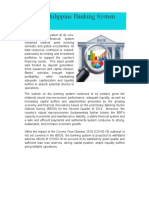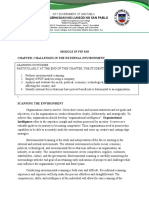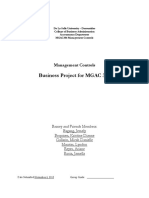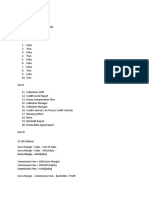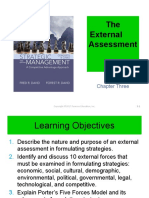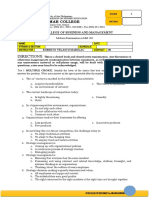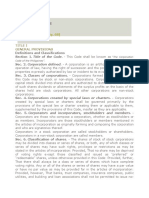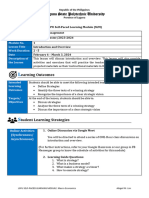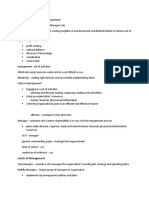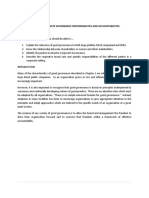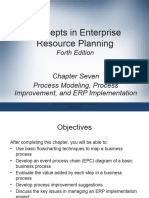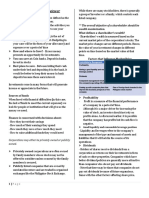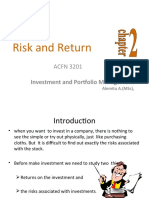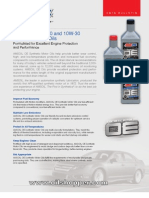0% found this document useful (0 votes)
314 views15 pagesCbmec 2 Module 2 Lesson 1
The document discusses challenges in an organization's internal environment and business strategies. It covers two lessons: 1) the internal environment, which analyzes factors like government, culture, competitors, customers and suppliers, and 2) value chain analysis and different types of business strategies like growth, competitive, and stability strategies. The internal environment presents direct impacts on an organization's conduct and there are various challenges within it to consider. Understanding these challenges is key to an organization's successful operations.
Uploaded by
frescy mosterCopyright
© © All Rights Reserved
We take content rights seriously. If you suspect this is your content, claim it here.
Available Formats
Download as PDF, TXT or read online on Scribd
0% found this document useful (0 votes)
314 views15 pagesCbmec 2 Module 2 Lesson 1
The document discusses challenges in an organization's internal environment and business strategies. It covers two lessons: 1) the internal environment, which analyzes factors like government, culture, competitors, customers and suppliers, and 2) value chain analysis and different types of business strategies like growth, competitive, and stability strategies. The internal environment presents direct impacts on an organization's conduct and there are various challenges within it to consider. Understanding these challenges is key to an organization's successful operations.
Uploaded by
frescy mosterCopyright
© © All Rights Reserved
We take content rights seriously. If you suspect this is your content, claim it here.
Available Formats
Download as PDF, TXT or read online on Scribd
/ 15



